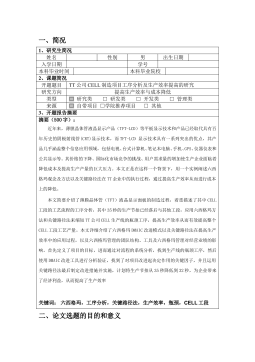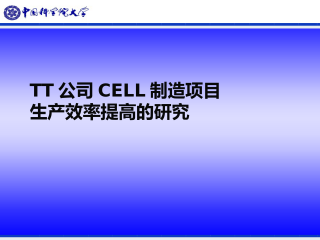
目 录
目 录
摘 要........................................................................................................................................... I
Abstract.........................................................................................................................................III
第一章 绪论.............................................................................................................................. - 1 -
1.1 课题来源与研究背景.................................................................................................. - 1 -
1.2 国内外研究现状及分析.............................................................................................. - 1 -
1.3 时态工作流的概念...................................................................................................... - 5 -
1.4 研究的目标和意义...................................................................................................... - 7 -
1.4.1 研究的目标与范围.......................................................................................... - 7 -
1.4.2 研究的意义...................................................................................................... - 8 -
1.5 本文主要贡献及创新点.............................................................................................. - 9 -
1.6 本文结构说明............................................................................................................ - 10 -
第二章 时态信息表示及演算................................................................................................ - 11 -
2.1 引言............................................................................................................................ - 11 -
2.2 时间系统.................................................................................................................... - 11 -
2.3 时态信息元素的类型................................................................................................ - 12 -
2.4 时态信息演算............................................................................................................ - 13 -
2.4.1 时态信息关系运算........................................................................................ - 13 -
2.4.2 时态信息算术运算........................................................................................ - 15 -
2.4.3 常用的时态信息计算函数............................................................................ - 16 -
2.5 绝对时间和相对时间................................................................................................ - 16 -
2.6 本章小结.................................................................................................................... - 17 -
第三章 时态工作流过程元模型............................................................................................ - 18 -
3.1 引言............................................................................................................................ - 18 -
3.2 相关研究.................................................................................................................... - 18 -
3.3 一个扩展的工作流过程元模型................................................................................ - 20 -
3.3.1 过程定义元模型............................................................................................ - 20 -
3.3.2 过程执行元模型............................................................................................ - 22 -
3.3.3 过程定义元模型与执行元模型的关系........................................................ - 23 -
3.4 过程元模型的时间属性分析.................................................................................... - 23 -
3.4.1 过程的时间属性............................................................................................ - 23 -
3.4.2 任务的时间属性............................................................................................ - 24 -
3.4.3 角色的时间属性............................................................................................ - 27 -
3.4.4 应用程序的时间属性.................................................................................... - 27 -
3.4.5 数据的时间属性............................................................................................ - 27 -
3.4.6 规则的时间属性............................................................................................ - 28 -
3.5 时态工作流过程元模型的形式化表示.................................................................... - 29 -
3.6 本章小结.................................................................................................................... - 33 -
第四章 时态工作流模型........................................................................................................ - 34 -
4.1 引言............................................................................................................................ - 34 -
4.2 相关研究.................................................................................................................... - 35 -

 2024-10-14 26
2024-10-14 26
 2025-01-09 7
2025-01-09 7
 2025-01-09 10
2025-01-09 10
 2025-01-09 6
2025-01-09 6
 2025-01-09 7
2025-01-09 7
 2025-01-09 8
2025-01-09 8
 2025-01-09 7
2025-01-09 7
 2025-01-09 10
2025-01-09 10
 2025-01-09 7
2025-01-09 7
 2025-01-09 8
2025-01-09 8










